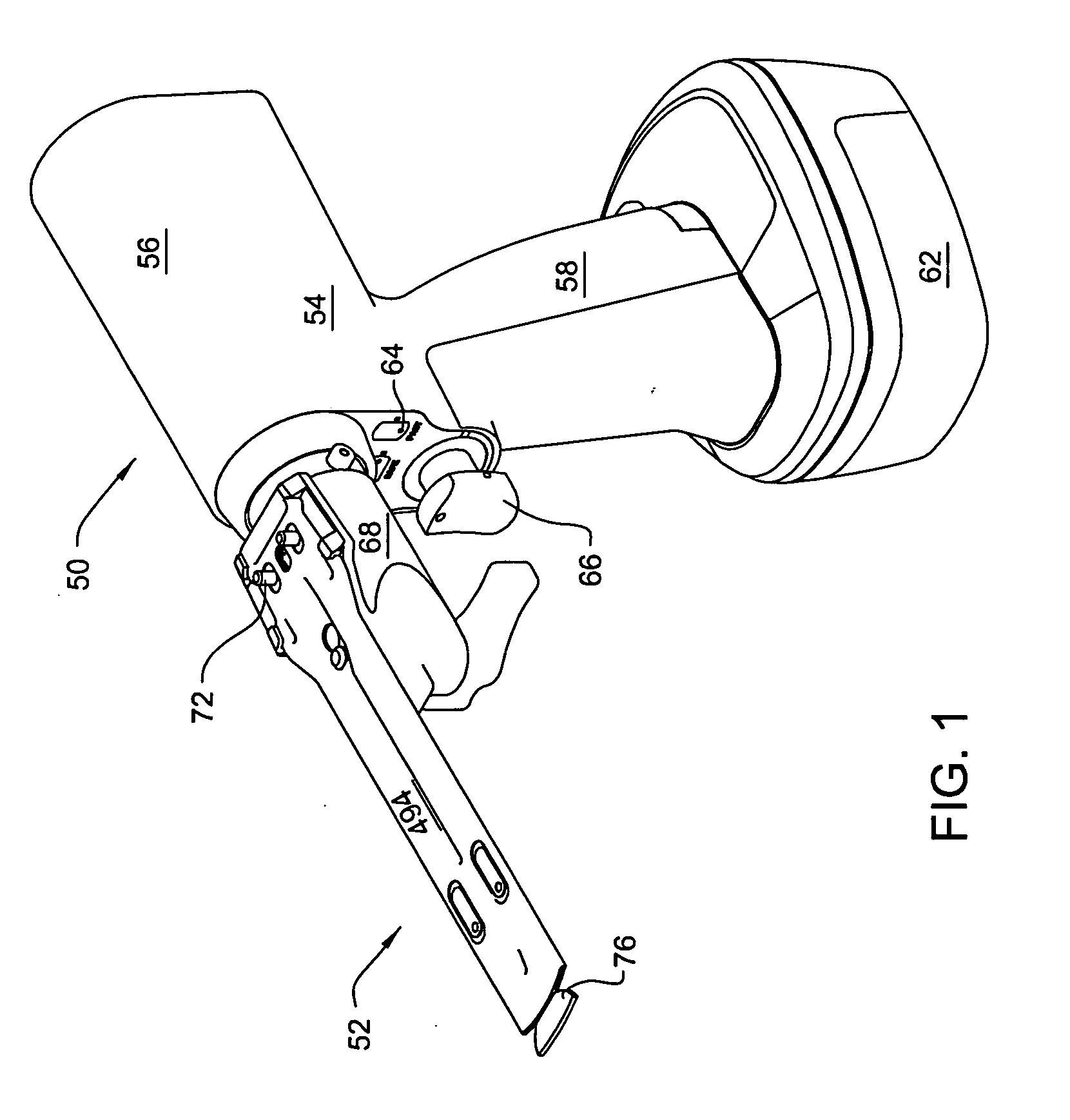Surgical sagittal saw with indexing head and toolless blade coupling assembly for actuating an oscillating tip saw blade and oscillating tip saw blade with self cleaning head
a technology of indexing head and saw blade, which is applied in the field of surgical sagittal saw and complementary saw blade assembly, can solve the problems of no longer precisely defining the intended cut line, the slot may become so wide, and the limit of the assembly is associated with it, so as to minimize the effort required to insert and remove the blade assembly. , the effect of easy releas
- Summary
- Abstract
- Description
- Claims
- Application Information
AI Technical Summary
Benefits of technology
Problems solved by technology
Method used
Image
Examples
Embodiment Construction
I. Overview
[0106]FIGS. 1 and 2 depict the surgical saw 50 of this invention and the blade assembly 52 used with the saw. Saw 50 includes a housing 54. The housing 54 has an elongated, top-located barrel section 56. A pistol-grip shaped handle 58, also part of housing 54, extends downwardly from barrel section 56. A motor 60 is disposed inside the housing barrel section 56. In some versions of the invention, motor 60 is a brushless, sensorless DC motor. This is exemplary, not limiting. In other versions of the invention, the motor 60 may be a DC motor with brushes and / or sensors, an AC driven motor or a motor that is pneumatically or hydraulically driven. In the illustrated version of the invention, saw 50 is a cordless power tool. A battery 62 removably attached to the butt end of handle 58 contains a charge for energizing the motor. Again, it should be understood that the invention is not so limited. In alternative versions of the invention, a power cord, an air line or a fluid lin...
PUM
| Property | Measurement | Unit |
|---|---|---|
| thickness | aaaaa | aaaaa |
| thickness | aaaaa | aaaaa |
| thickness | aaaaa | aaaaa |
Abstract
Description
Claims
Application Information
 Login to View More
Login to View More - R&D
- Intellectual Property
- Life Sciences
- Materials
- Tech Scout
- Unparalleled Data Quality
- Higher Quality Content
- 60% Fewer Hallucinations
Browse by: Latest US Patents, China's latest patents, Technical Efficacy Thesaurus, Application Domain, Technology Topic, Popular Technical Reports.
© 2025 PatSnap. All rights reserved.Legal|Privacy policy|Modern Slavery Act Transparency Statement|Sitemap|About US| Contact US: help@patsnap.com



